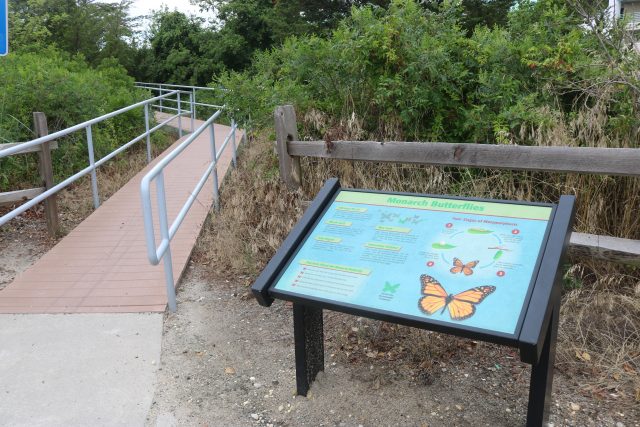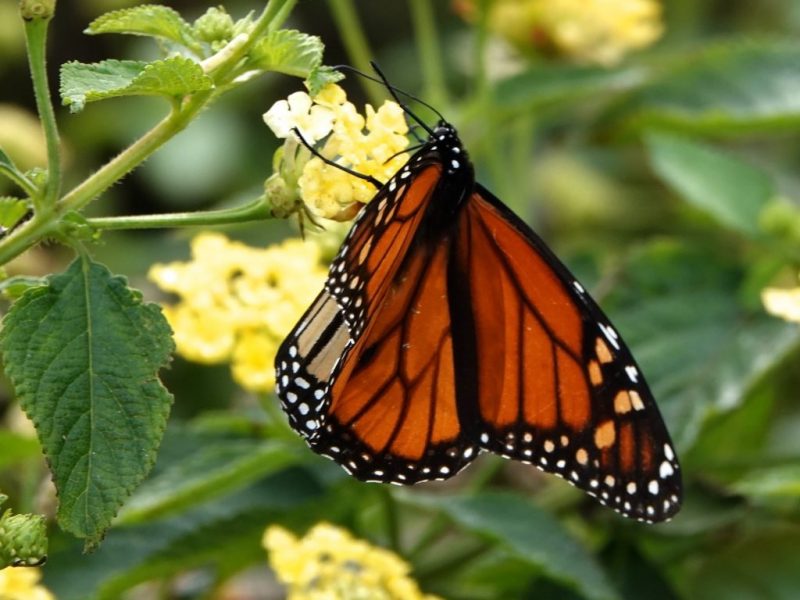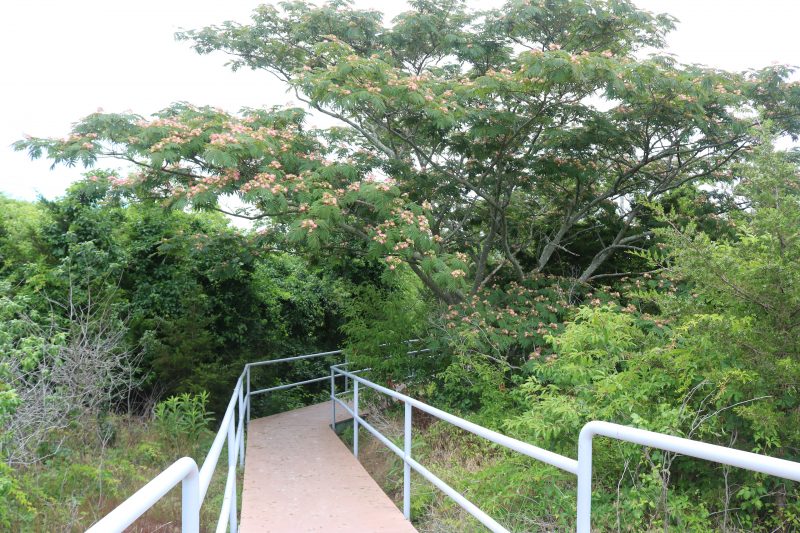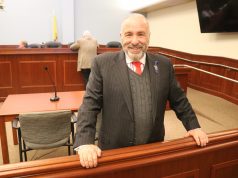
By DONALD WITTKOWSKI
Some visitors drive to Sea Isle City, others arrive by boat and still others fly in.
The beach resort doesn’t have an airport, but each year countless monarch butterflies are seen flying around Sea Isle while making the Jersey Shore a stopover during their migratory journey to Mexico.
One of the favorite places for the majestic butterflies to visit in Sea Isle is a wooded refuge in the southern tip of the island known as Townsends Inlet Waterfront Park.
Sea Isle is going to make the park even more inviting this summer for the delicate, winged creatures by creating a butterfly garden that will include milkweed and other plants that appeal to monarchs.
“I’m excited about the whole thing. When it’s all said and done, it will bring people to Townsends Inlet Waterfront Park because it’s going to be so nice,” said Christie Ostrander, a Sea Isle City Recreation Office assistant who is helping to oversee the project.
Ostrander noted that the butterfly garden will include artwork to serve as a colorful backdrop for visitors to take selfies while admiring the orange and black monarchs.
The city’s Public Works Department has begun cleaning up the area and removing fallen trees to transform the site into a butterfly garden. The garden is expected to be ready in about two weeks.
Ostrander credited Public Works employees John Wagner and Anthony Diantonio for doing much of the work. She also noted that Wagner has knowledge about monarch butterflies that will come in handy for the project.
In addition, Wagner’s relatives own Surran’s Nursery, a garden center in Corbin City that will supply the milkweed and other butterfly-friendly plants for Sea Isle, Ostrander said.

A number of groups are collaborating to make the butterfly garden a reality, including the Public Works Department, Sea Isle’s Environmental Commission and the city’s Green Team. Mayor Leonard Desiderio has endorsed the project. Pattiann Ponichtera, the mayor’s assistant, also took part.
The Environmental Commission is paying the $558 expense for the butterfly garden’s plants, Ostrander said
“Everybody jumped on board. It’s amazing how fast it’s moving,” she said of the project.
Ostrander is part of the Green Team and oversees Sea Isle’s Sustainable Jersey programs. Sustainable Jersey awards New Jersey municipalities points and grants for projects that promote and protect the environment. The butterfly garden will help Sea Isle accumulate more points.
Sea Isle is also planning to create another butterfly garden, although it will be smaller than the one in Townsends Inlet. It will be located on the south side of the library property at 48th Street and Central Avenue. Ostrander expects it to be ready in the fall.
Ostrander sadly noted that monarch butterfly populations are on the decline nationwide. Sea Isle officials agreed that the butterfly garden would be an environmentally friendly way to help protect one of the shore’s most eagerly awaited visitors.
“I think we have to keep in mind that nationwide, the population is going down,” Ostrander said.

The creation of the butterfly garden in Townsends Inlet coincides with the emergence of the monarchs over the summer. Ostrander said the butterfly season in Sea Isle starts in May and peaks around August. She has already seen her first monarch this year at her home in neighboring Seaville.
Monarch butterflies often make the New Jersey shore points a stop on their fall migration to Mexico.
However, most monarch adults only live about two to five weeks and don’t migrate long distances, according to the New Jersey Audubon Society.
Every summer, three or four generations of the non-migratory monarchs hatch out, flying relatively short distances as the weather warms and their summer range expands. They mate and lay eggs along the way, parenting the next generation of monarchs, the New Jersey Audubon Society says on its website.
“As the fall approaches, something – no one is sure exactly what – causes this final generation to delay their reproduction and start migrating south. These are the butterflies that will fly hundreds, perhaps more than two thousand miles, and overwinter in Mexico,” the website says.







